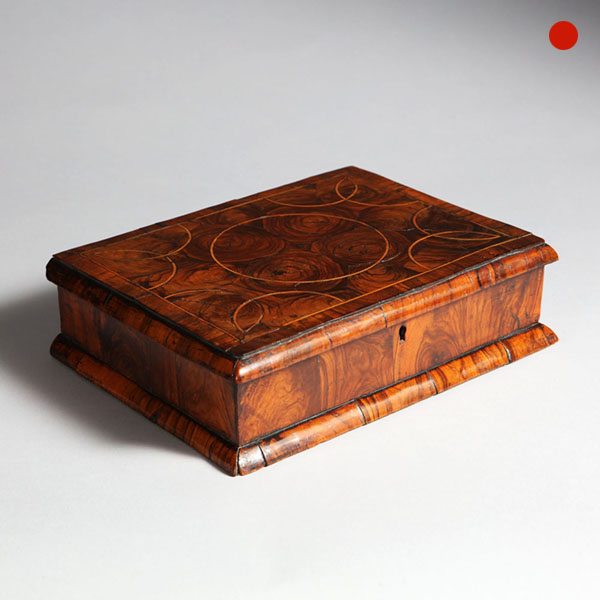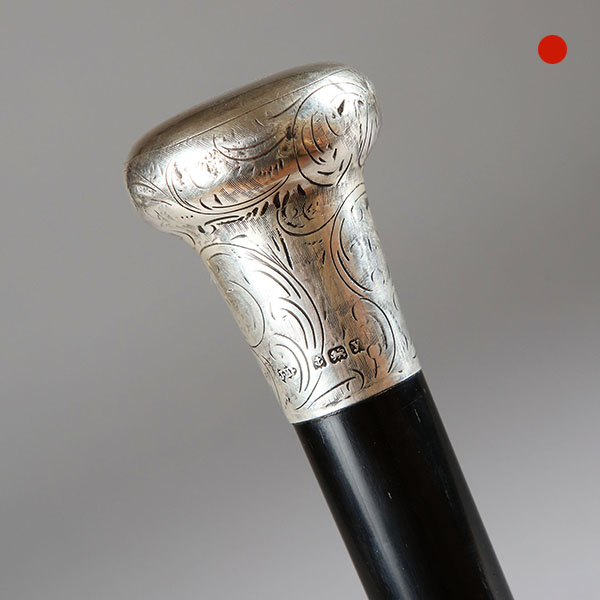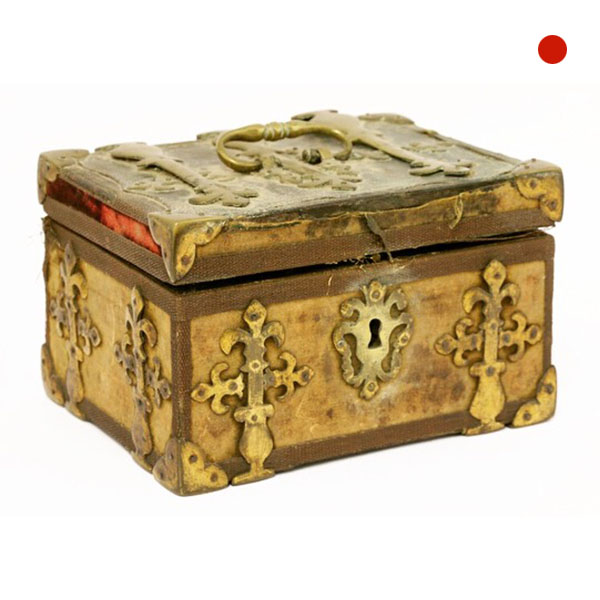A George III Giltwood Mirror in the Manner of Thomas Johnson
circa 1760
Sold
Request Information
Follow Us
A George III Giltwood Mirror in the Manner of Thomas Johnson
An early George III carved giltwood mirror in the manner of Thomas Johnson, circa 1760.
The period mercury mirror plate within a moulded fluted frame is flanked by cascading native flora. The carved upper C-scroll corners are pierced and surmounted by a further scroll which seamlessly flows into the pediment of C-scrolls and flora centred by a rose. Similarly, the lower of the mirror is edged with large scrolls of dripping acanthus leaves and C-scrolls all flowing to central cartouche.
It should be noted that this example is in the most wonderful condition and dates from one of the most celebrated periods in English furniture history ‘ The Chippendale Period’.
Additional reading and Literature: H. Hayward, Thomas Johnson and the English Rococo, London, 1964; Peter Ward-Jackson, English Furniture Designs of the Eighteenth Century, London, Victoria and Albert Museum, 1984.
Mirrors of a similar form can be found at Sizergh Castle, Cumbria, North, Blickling Hall, Norfolk and Nostell Priory, West Yorkshire.
Thomas Johnson (1714-1778) was a notable British carver, designer and gilder who was born in London. He fully embraced the capriciousness of the rococo style. He was a pupil of Matthias Lock who embodied the harmonious combination of naturalistic motifs and had a tendency towards asymmetry.
Thomas Johnson concentrated his efforts on designs of wall lights, girandoles and console tables which allowed him to play with form and motifs. His designs were more elaborate than his contemporaries, and they were intended to promote his inventiveness rather than for more practical purposes. He first published his designs in the publication of Twelve Girandoles in 1755. His target audiences were cabinetmakers and upholsterers rather than the end-user. This publication was followed by a series of 53 designs published between 1756-1757. Three years later he published A New Book of Ornaments from which only one plate survives though others are known from 19th-century reproductions. One year later the prolific designer produced, One Hundred and Fifty New Designs.
The flora is most likely to be the flowers, leaves and fruit of the fig tree. Figs were imported from France, Spain and Italy to England in the 18th century and were planted on the south walls of stately houses whose aristocratic owners appeared to be the only ones to appreciate them… the lower classes having little regard for figs and often derided them, as in the common saying ‘not worth a fig’. Interestingly, ‘Brunswick’, ‘Brown Turkey’ and ‘White Marseilles’ are still the most commonly grown figs in Britain.
Condition
Provenance
Private London collection
Literature
Dimensions
PREVIOUSLY SOLD

Charles II Pewter Flat Lid Tankard
The Oak Interior – An extremely rare Charles II pewter tankard dated 1666. The tankard bears a crested stamp dated 1666 to the inside of the base. The flat caddy and ringed lid are stamped to the top with four hallmarks of the period and the initials C B. The beautifully crafted handle terminates at a bifurcated rams horn hinged thumb piece and the vessel sits on a multiple ringed and flared base.

17th-Century Olive Oyster Lace Box
Charming and original 12” olive oyster lace box, circa 1680-90. It is most likely that this gorgeous piece was commissioned during the short reign of William and Mary (1689-1702). This was a great time in British furniture design with some of the most notable pieces to date being commissioned.

A lacquer kodansu (small cabinet) | Edo period, 19th century
A lacquer Kodansu, Edo period, 19th century Follow UsA lacquer Kodansu Edo period 19th century The rectangular chest with chamfered edges and a hinged door opening to reveal three drawers, all decorated in gold, silver, red and black...

Engraved silver-topped ebony walking cane. Dated 1923 Birmingham
Silver-topped Ebony Walking Cane of outstanding quality and effortless elegance. Tapering ebony cane with a beautifully engraved silver cap.

17th-18th Century Silk Covered Strongbox Jewel Casket
17th-Century Silk Covered Strongbox Jewel Casket. Occasionally an object can certainly grab your imagination, this casket of small proportions is no exception.

Charles II Kingwood Oyster Lace Box
An extremely rare Charles II kingwood oyster lace box 1660-1675. The box through its kingwood (also known as princeswood) oysters laid in a parquetry fashion, relate closely to an important and exceptionally rare triad set, in private collection at Dryton House.

Charles II Pewter Flat Lid Tankard
The Oak Interior – An extremely rare Charles II pewter tankard dated 1666. The tankard bears a crested stamp dated 1666 to the inside of the base. The flat caddy and ringed lid are stamped to the top with four hallmarks of the period and the initials C B. The beautifully crafted handle terminates at a bifurcated rams horn hinged thumb piece and the vessel sits on a multiple ringed and flared base.

17th-Century Olive Oyster Lace Box
Charming and original 12” olive oyster lace box, circa 1680-90. It is most likely that this gorgeous piece was commissioned during the short reign of William and Mary (1689-1702). This was a great time in British furniture design with some of the most notable pieces to date being commissioned.

A lacquer kodansu (small cabinet) | Edo period, 19th century
A lacquer Kodansu, Edo period, 19th century Follow UsA lacquer Kodansu Edo period 19th century The rectangular chest with chamfered edges and a hinged door opening to reveal three drawers, all decorated in gold, silver, red and black...

Engraved silver-topped ebony walking cane. Dated 1923 Birmingham
Silver-topped Ebony Walking Cane of outstanding quality and effortless elegance. Tapering ebony cane with a beautifully engraved silver cap.

17th-18th Century Silk Covered Strongbox Jewel Casket
17th-Century Silk Covered Strongbox Jewel Casket. Occasionally an object can certainly grab your imagination, this casket of small proportions is no exception.

Charles II Kingwood Oyster Lace Box
An extremely rare Charles II kingwood oyster lace box 1660-1675. The box through its kingwood (also known as princeswood) oysters laid in a parquetry fashion, relate closely to an important and exceptionally rare triad set, in private collection at Dryton House.
YOU MAY ALSO LIKE

Engraved Eight-Day Striking and Repeating Carriage Clock by Perregaux Au Locle
Engraved Eight-Day Striking and Repeating Carriage Clock by Perregaux Au Locle Follow UsEngraved Eight-Day Striking and Repeating Carriage Clock by Perregaux Au Locle The superb engraved gilt gorge brass case has facetted glass panels to all...

Fine George III 18th Century Period Mahogany Longcase Clock by Tomas Fowle
18th Century Period Mahogany Longcase Clock by Tomas Fowle £12,995 Follow Us18th Century Period Mahogany Longcase Clock by Tomas Fowle A fine George III period mahogany longcase clock of excellent colour, patination and proportions, circa...

17th Century Figured Walnut and Seaweed Marquetry Lace Box
17th Century Figured Walnut and Seaweed Marquetry Lace Box £3,600 Follow Us17th Century Figured Walnut and Seaweed Marquetry Lace Box A fine and extremely rare figured walnut and seaweed marquetry 'lace box', circa.... let’s break it down -...

19th Century Repeating Gilt-Brass Carriage Clock by the Famous Drocourt
19th Century Repeating Gilt-Brass Carriage Clock by the Famous Drocourt £5,600 Follow Us19th Century Repeating Gilt-Brass Carriage Clock by the Famous Drocourt A superb repeating carriage clock with a gilt-brass gorge case by the famous maker...

17th-Century Hague Clock Signed by Pieter Visbagh, circa 1675
Small 17th Century Hague clock made c. 1675 by Pieter Visbagh, who was apprenticed by Salomon Coster. The latter made the first pendulum clock according to the instructions of Christiaan Huygens, the internationally renowned scientist who developed the idea of applying a pendulum to a clock movement.

Pair of 18th-Century English Rococo Gilt Bronze Andirons or Firedogs
An exceptional pair of 18th century English Rococo gilt bronze andirons or fire dogs.
The bold shape of these andirons relate to designs of Thomas Johnson (1714–1778), one of London’s pioneers of the ‘Modern’ or French style, later known as Rococo.

Engraved Eight-Day Striking and Repeating Carriage Clock by Perregaux Au Locle
Engraved Eight-Day Striking and Repeating Carriage Clock by Perregaux Au Locle Follow UsEngraved Eight-Day Striking and Repeating Carriage Clock by Perregaux Au Locle The superb engraved gilt gorge brass case has facetted glass panels to all...

Fine George III 18th Century Period Mahogany Longcase Clock by Tomas Fowle
18th Century Period Mahogany Longcase Clock by Tomas Fowle £12,995 Follow Us18th Century Period Mahogany Longcase Clock by Tomas Fowle A fine George III period mahogany longcase clock of excellent colour, patination and proportions, circa...

17th Century Figured Walnut and Seaweed Marquetry Lace Box
17th Century Figured Walnut and Seaweed Marquetry Lace Box £3,600 Follow Us17th Century Figured Walnut and Seaweed Marquetry Lace Box A fine and extremely rare figured walnut and seaweed marquetry 'lace box', circa.... let’s break it down -...

19th Century Repeating Gilt-Brass Carriage Clock by the Famous Drocourt
19th Century Repeating Gilt-Brass Carriage Clock by the Famous Drocourt £5,600 Follow Us19th Century Repeating Gilt-Brass Carriage Clock by the Famous Drocourt A superb repeating carriage clock with a gilt-brass gorge case by the famous maker...

17th-Century Hague Clock Signed by Pieter Visbagh, circa 1675
Small 17th Century Hague clock made c. 1675 by Pieter Visbagh, who was apprenticed by Salomon Coster. The latter made the first pendulum clock according to the instructions of Christiaan Huygens, the internationally renowned scientist who developed the idea of applying a pendulum to a clock movement.

Pair of 18th-Century English Rococo Gilt Bronze Andirons or Firedogs
An exceptional pair of 18th century English Rococo gilt bronze andirons or fire dogs.
The bold shape of these andirons relate to designs of Thomas Johnson (1714–1778), one of London’s pioneers of the ‘Modern’ or French style, later known as Rococo.






